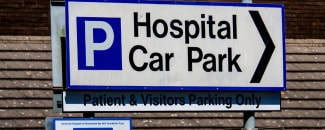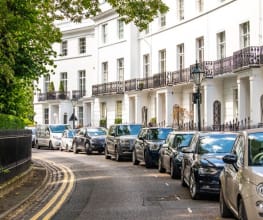Already in use by companies such as Uber, dynamic pricing can be used to maximise revenue and make the unorganised parking industry more efficient.
These types of strategies are used for hotel rooms, rental cars, train and airplane tickets. Customers are often more willing to pay a higher price for the same product at peak times and expect to pay a lower price at times of low demand.
Flexible supply and demand pricing structures
With ride-sharing app Uber, flexible supply and demand pricing structures manage revenue at peak times with surge pricing. This means that fare rates automatically increase as demand increases and outstrips the supply of available drivers in the area. This ensures a reliable service can be maintained for customers who are willing to pay a premium price. Customers can choose to wait, and the app has the facility to alert these customers when the price begins to drop again.
Many car park operators are not yet taking advantage of dynamic pricing to realise the full value of their parking facilities. Most car parks charge fixed rates and drivers pay the same price per hour regardless of whether demand for parking spaces is high or low. Fixed rates are sometimes varied, with cheaper rates for off peak times or early bird specials. This is intended to help generate more revenue.
Traditionally car park pricing has been determined by historical data that is often unorganised. This leaves car park operators without a reliable way to measure demand and adjust their prices in accordance with this.
Modern technology to modify pricing in real time
Modern technology offers a number of ways in which car park operators can more accurately ascertain future demand for their parking facilities and set appropriate prices in alignment with this. It is possible to modify pricing in real time through the use of parking sensors and software. These analyse the frequency of use of parking facilities and the availability of space.
Through a strategy of dynamic pricing, car park operators can maximise revenue by charging a premium for parking when demand is at its highest. This then offsets potential losses during times of low demand for parking spaces. In addition, reduced fees during periods of low demand incentivise drivers to make use of vacant parking spaces.
Dynamic pricing is beneficial for drivers too
As well as being beneficial to the car park operator, dynamic pricing for parking is also beneficial for the drivers. It means that they are paying car parking charges based on the actual value of the space rather than an arbitrary static charge. Drivers who typically park during low demand periods or in areas that are in less demand will find that they are paying less as prices go down.
On-street parking is often cheaper than off-street parking. This can lead to situations where drivers circle around crowded side streets looking for a space. Not only does this lead to unnecessary air pollution, but it also creates additional congestion when there are often off-street parking spaces available and unused. By implementing dynamic pricing for parking, car park operators can incentivise drivers to use their parking facilities at times when there is low demand for off-street parking. This means that the drivers are still paying a low parking fee, on-street congestion is lowered, and car park operators can benefit from increased revenue.
There are of course some arguments against dynamic pricing for parking. For example, the drivers who have to park at peak times and in peak areas will end up paying more than they would with static pricing. However, algorithms for dynamic pricing can mitigate against these disadvantages and introduce synergy between pricing and the market drivers of supply and demand.
There are also benefits to parking charges being higher at times of peak demand. This means that drivers who are prepared to pay more are more likely to be able to easily find a space. Some drivers may also choose to change their mode of transport during peak parking times. Sharing vehicles, using public transport, cycling or walking are all ways of reducing the impact of transport on the environment.
Sensor based networks are key to the success of dynamic parking. Data needs to be gathered to find out when parking spaces are available and when they are in most demand. These sensors can be installed in parking bays and detect when the bay is occupied. They are long lasting and can communicate over long distances. The data gathered by the sensors can be transmitted to smartphone apps. This enables drivers to check when spaces are available and for car park operators to analyse when spaces are in high demand.
Many cities already adopted dynamic pricing policies
Some cities are already adopting dynamic pricing policies for parking. Washington D. C. is one such city. During popular events, weekend nights, and at other times when demand for parking is high, parking space owners can increase their prices. This helps to control occupancy throughout the parking facilities. At times when parking demand is low, they can lower their parking charges. This enables drivers to pay more affordable rates for parking than what is usually on offer. It also attracts drivers to use the parking facilities at times when demand is low.
For successful dynamic prices to be implemented, car park operators first need to be able to forecast demand for their parking facilities. Data from sensors can be analysed to help identify daily, weekly and monthly patterns. It is particularly important to identify at what times demand is at its lowest and when demand is at its highest. Managing data for dynamic pricing in car parks is not a one-off task. It is an ongoing job. Pricing strategies need to be monitored and reviewed regularly.
The importance of data
As well as data from sensors, car park operators may also want to take into account data from parking enforcement officers and surveys, weather, street closures, holidays, local business activities, and local events. Demand for parking is likely to surge and fall depending on all of these variables. For example, on a rainy day, demand may be higher because people are more likely to prefer to drive than walk to work. Similarly, demand can be predicted to be higher on a day when there is a local event such as a festival or sporting event.
Dynamic pricing and pre-booking online
Dynamic pricing for parking can also work for pre-booking parking spaces online. Operators can integrate an online booking process into their website. This offers drivers a guarantee that a place will be available and makes the most of the parking facility’s capacity. Dynamic pricing can also be used in conjunction with digital signage so that operators can vary parking charges for drive-in customers as well as online users.
Dynamic pricing for parking does not have to be done in real time, in the same way as the Uber app. This could make drivers’ lives more complicated. For example, if you parked in a spot expecting to pay a certain fee, and the fee then increased as soon as you stepped out of the car. It may be more feasible and beneficial for car park prices to be fixed in advance and changed every few weeks, based on analysis of the data.
Dynamic pricing and customer satisfaction
Some car park operators choose to price parking spaces according to the convenience of the location or the size of the space. Larger spaces or those that are in prime locations cost more. However, when all the standard spaces are full, the car park operator can choose to use dynamic pricing to lower the cost of the premium spaces. This means that drivers who expected to get a standard spot can now get a premium space for the same price, leading to a sense of customer satisfaction and a higher likelihood of repeat bookings.
Drivers like to know what to expect and to feel that they are getting a good deal. It is important to ensure that parking charges are as consistent as possible, within the strategy of dynamic pricing. If prices fluctuate too often or rise too excessively, drivers are unlikely to appreciate this. Design your dynamic pricing strategy in a way that seems fair to drivers and maintains good customer service.
Dynamic pricing to maximise revenue and parking facility's capacity
Traditionally, parking prices have not been well adapted to cope with fluctuating supply and demand. This has resulted in lost revenue, inefficient pricing strategies, and driver frustration. Dynamic pricing can be an effective way of reversing this trend. A dynamic pricing strategy for parking can ensure that car park operators maximise their revenue and make best use of their parking facility’s capacity, whilst drivers can benefit from low prices at times of low demand and easier to secure parking spaces at peak times when charges are higher. Environmental benefits, such as less congestion on the roads and more drivers switching to greener transport options at peak times, are an added bonus to dynamic pricing for parking.








